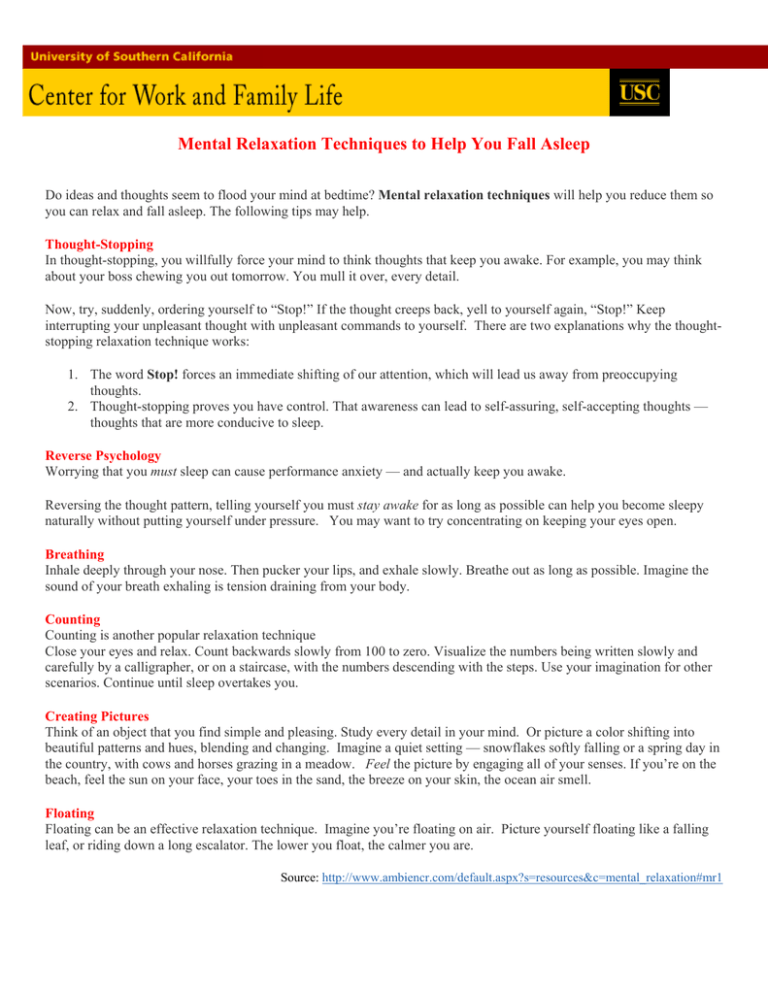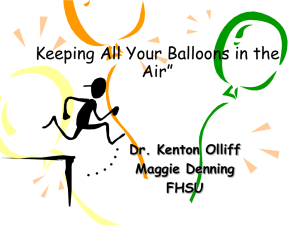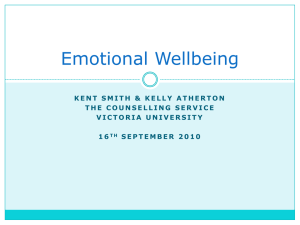Mental Relaxation Techniques to Help You Fall Asleep
advertisement

Mental Relaxation Techniques to Help You Fall Asleep Do ideas and thoughts seem to flood your mind at bedtime? Mental relaxation techniques will help you reduce them so you can relax and fall asleep. The following tips may help. Thought-Stopping In thought-stopping, you willfully force your mind to think thoughts that keep you awake. For example, you may think about your boss chewing you out tomorrow. You mull it over, every detail. Now, try, suddenly, ordering yourself to “Stop!” If the thought creeps back, yell to yourself again, “Stop!” Keep interrupting your unpleasant thought with unpleasant commands to yourself. There are two explanations why the thoughtstopping relaxation technique works: 1. The word Stop! forces an immediate shifting of our attention, which will lead us away from preoccupying thoughts. 2. Thought-stopping proves you have control. That awareness can lead to self-assuring, self-accepting thoughts — thoughts that are more conducive to sleep. Reverse Psychology Worrying that you must sleep can cause performance anxiety — and actually keep you awake. Reversing the thought pattern, telling yourself you must stay awake for as long as possible can help you become sleepy naturally without putting yourself under pressure. You may want to try concentrating on keeping your eyes open. Breathing Inhale deeply through your nose. Then pucker your lips, and exhale slowly. Breathe out as long as possible. Imagine the sound of your breath exhaling is tension draining from your body. Counting Counting is another popular relaxation technique Close your eyes and relax. Count backwards slowly from 100 to zero. Visualize the numbers being written slowly and carefully by a calligrapher, or on a staircase, with the numbers descending with the steps. Use your imagination for other scenarios. Continue until sleep overtakes you. Creating Pictures Think of an object that you find simple and pleasing. Study every detail in your mind. Or picture a color shifting into beautiful patterns and hues, blending and changing. Imagine a quiet setting — snowflakes softly falling or a spring day in the country, with cows and horses grazing in a meadow. Feel the picture by engaging all of your senses. If you’re on the beach, feel the sun on your face, your toes in the sand, the breeze on your skin, the ocean air smell. Floating Floating can be an effective relaxation technique. Imagine you’re floating on air. Picture yourself floating like a falling leaf, or riding down a long escalator. The lower you float, the calmer you are. Source: http://www.ambiencr.com/default.aspx?s=resources&c=mental_relaxation#mr1




